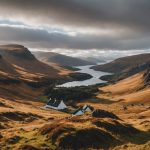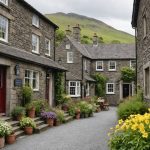Understanding the Scottish Highlands for Photography
Capturing the Scottish Highlands through photography is both a delightful challenge and an extraordinary reward. The unique geography, with its rugged mountains, expansive lochs, and rolling glens, offers incredible opportunities for landscape photography. This varied terrain allows for dramatic compositions and stunning vistas, making it a paradise for photographers seeking to encapsulate the raw beauty of nature.
Beyond landscapes, cultural photography in the Highlands is equally enriching. Iconic elements like ancient castles, quaint villages, and traditional highland gatherings provide a window into the region’s rich cultural tapestry. When photographing these scenes, aim to convey the vibrant history and enduring traditions that define the Scottish Highlands.
Also to discover : Discovering Hidden Gems: Your Ultimate Guide to Local Crafts in the Lake District
Seasonal changes add another layer of depth to your photography. The Highlands transform dramatically from one season to the next, each offering unique photographic opportunities. Spring and summer bring lush greenery and vibrant heather, ideal for capturing lively landscapes. Autumn offers a palette of rich, warm colours, while winter, with its snow-capped peaks and frosty vistas, lends a serene and stark beauty to your shots. Embrace these seasonal shifts to diversify your Scottish Highlands photography and enhance your portfolio.
Essential Photography Gear for the Highlands
Exploring the Scottish Highlands offers breathtaking opportunities for landscape photography. Key to capturing these rugged terrains is the right photography equipment.
Also read : Explore Liverpool”s Titanic Connection: Uncovering the City”s Historic Landmarks
First, a reliable camera is fundamental. Choose one with excellent resolution and dynamic range to capture the subtleties of light and shadow. Lightweight and portable travel gear can make navigating the highlands’ inclines more manageable without compromising on quality.
For lenses, a wide-angle is indispensable for expansive landscapes. It allows you to capture more within the frame and is ideal for panoramic views. Meanwhile, a telephoto lens is perfect for those distant, enchanting subjects without disturbing the scene.
Complement your primary equipment with useful accessories. A sturdy tripod will provide stability against harsh winds, essential for sharp, long-exposure shots. Filters can enhance your images amidst fluctuating light conditions, particularly polarizing filters to manage reflections and boost contrast.
Don’t forget a weatherproof camera bag to protect your gear from unpredictable weather. Consider additional tools like remote shutters for precise timing and control.
Equipping yourself with the appropriate landscape photography gear promises a rewarding photographic adventure in the highlands.
Creating Your Personalized Itinerary
Building a memorable photography itinerary in the Scottish Highlands requires careful planning to ensure you capture its unique beauty. With a well-crafted travel guide, you’ll be able to explore both iconic spots and hidden treasures.
Key Locations for Capturing Stunning Landscapes
The Scottish Highlands tour presents numerous opportunities for photographers. Places like Glen Coe and the Isle of Skye are renowned for their dramatic landscapes. These locations provide photographers with vistas that are not only scenic but also varied, allowing for a wide range of photographic styles.
Hidden Gems Off the Beaten Path
Beyond the famous spots, there are hidden gems that offer equally captivating shots. Consider visiting the Fairy Pools on Skye or the remote peninsula of Knoydart. These places are less crowded, providing a serene environment ideal for photography. Exploring these areas can yield unique perspectives and compositions.
Suggested Timeframes for Visits
To capture the best light, the optimal times to visit are during the golden hours—shortly after sunrise and before sunset. These times provide soft lighting that enhances the natural colours and textures of the landscape, making your photography more appealing and dramatic. Additionally, visiting in autumn can offer more vibrant tones due to the changing foliage.
Photography Techniques for the Scottish Highlands
The Scottish Highlands offer a magnificent backdrop for any photography enthusiast. Capturing dramatic landscapes requires a solid understanding of various photography techniques. One fundamental landscape photography tip is to always consider the time of day. Golden hours, around sunrise and sunset, are ideal for shooting as they provide soft, warm light that enhances the natural beauty.
Incorporating cultural elements can add depth to your images. Look for iconic structures, like castles or bridges, that reflect the area’s rich history. Position them within your frame to highlight both the structure and the surrounding landscape. This technique allows the viewer to engage with Scotland’s heritage through your photographs.
Engaging creatively with natural light is essential for effective creative photography. Experiment with different angles and light sources. For instance, backlighting subjects such as trees or mist can produce dramatic silhouettes. Overcast days in the Highlands can be advantageous as well. The diffused light softens shadows and highlights, adding an ethereal quality to your photos.
Make the most of the diverse Highland landscape by exploring different perspectives and compositions. Remember, the key is to be patient and let the environment inspire you.
Enhancing Your Photography Experience
Local photography communities offer a treasure trove of advice, support, and inspiration. Engaging with these groups not only improves your skills but also fosters connections with like-minded individuals. Participating in photography forums like Digital Photography Review or photography-focused clubs can help in sharing experiences and gaining feedback.
Social media in photography plays a crucial role in contemporary practice. Platforms such as Instagram and Pinterest are excellent for discovering trends, new techniques, and inspiration. They provide a space to share your works and receive community feedback, a process invaluable for growth. Engaging on social media can build your portfolio’s visibility and open opportunities previously unreachable.
To maximize your photography journey, combine online and offline explorations. Attend local meet-ups, participate in workshops, and actively contribute to online forums. This engagement enhances not just your technical abilities but also your personal enjoyment of photography.
Interacting within communities helps photographers tackle challenges through shared experiences and collective learning. Moreover, feedback from these platforms encourages photographers to experiment and refine their artistic expression. Embrace these opportunities to enrich your practice and foster a robust network of photography enthusiasts.
Showcasing Your Photography
Crafting an unforgettable photography presentation requires a blend of careful selection, the right platform, and engaging storytelling. When curating your travel photography portfolio, begin by selecting images that resonate with your style and narrative. Aim for diversity—choose photos that highlight varied locations, cultures, and emotions. This makes your portfolio rich and enticing for viewers.
When it comes to photo sharing, consider platforms like Instagram or Flickr. These offer wide-reaching audiences and tools to enhance engagement through comments and likes. For photographers looking to build a more curated collection, a personal website is ideal for their portfolio building. Websites such as Squarespace or Wix provide customizable templates to create sleek, professional portfolios that captivate viewers.
Engaging with audiences through storytelling with images can elevate the viewer’s experience. A compelling story can transform a photo from a static image to a dynamic narrative. Use a series of photos to tell a complete story, giving each image context and depth. Add captions or short descriptions to convey the mood and details, inviting viewers to join the journey.










